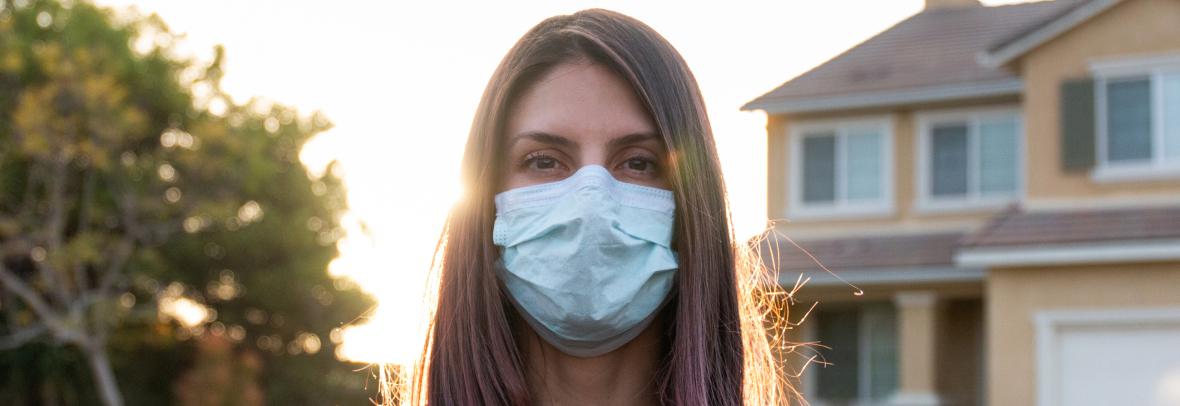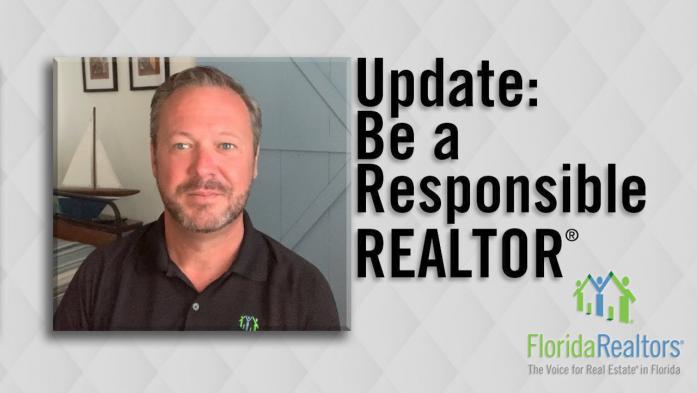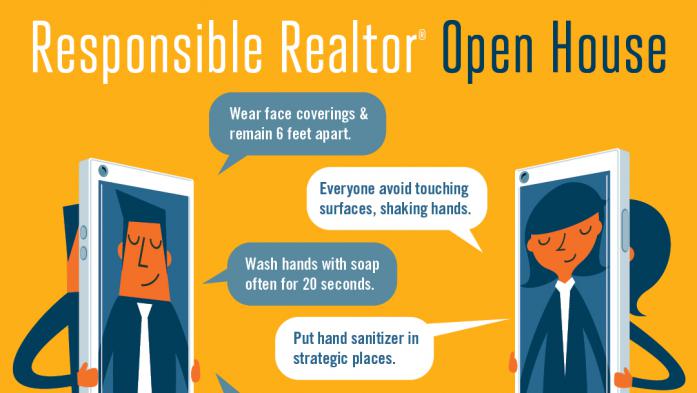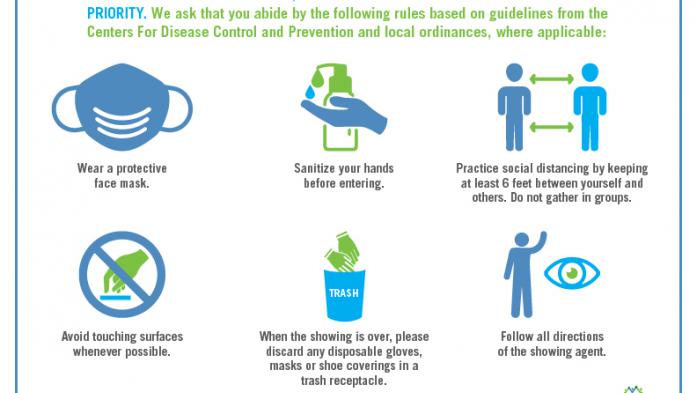
Safety Guidelines for Realtors Showing Properties During COVID-19
UPDATE: How to Be a Responsible Realtor During Coronavirus
Effective May 22, 2020
This guide has been developed based on public communications by the Florida surgeon general. If you determine that a virtual open house is not an option, here are some dos and don’ts for an in-person event.
IMPORTANT REMINDER: COVID-19 may be spread by individuals who show NO SYMPTOMS; therefore, safety protocols are essential for any practice of in-person real estate activity. As such, we recommend that, whenever possible, you should hold virtual open houses.
If you decide in-person open houses are right for your business, carefully plan how you will conduct them given the pandemic. It’s not business as usual. Start developing a strategy to address the potential risks of in-person events. The plan should involve discussions with and/or information collected from:
- The broker and agent
- The homeowner
- The condo or homeowners association
How to Be a Responsible Realtor During Coronavirus
Finalize your plan considering this list of actions you may want to avoid and some you may want to implement.
Click here for a downloadable version of the Realtor in-person showing guidelines.
DO:
- hold a conversation with your broker and the homeowner about disinfecting the property and the availability and supply of personal protective equipment (PPE).
- ensure measures to disinfect the property prior to and after the event. Disinfecting must be done according to the Centers for Disease Control (CDC) Guidelines and is not the same as routine cleaning.
- evaluate the possibility of providing a website link in your advertising to set appointment times for the open house to help control density, collect contact information, and provide safety information to guests.
- consider bringing someone to ensure guests are following safety protocols.
- post a sign, visible to guests, near the entrance to the property that contains essential safety information and have an assistant direct guests’ attention
- to the sign as they enter.
- consider having an additional person on-site to open the door for those entering and exiting the property, unless you can leave the doors propped open.
- set up an area outside to converse with guests and answer questions to reduce the time guests spend in the property.
- keep all interior doors in the home open, if possible, to minimize the need to touch surfaces.
- plan a route for visitors to follow while touring the property to allow for different guests to be in separate areas of the home and ensure safe distancing in narrow passageways.
-
- have extra disposable PPE available at entrances for guests who do not bring their own.
- require social distancing; everyone must remain at least 6 feet apart.
- wash your hands with soap for 20 seconds frequently.
- place hand sanitizer in strategic locations throughout the property.
- place an open trash can near the exits to the property for disposal of used PPE.
- consider the open house a “PAPER FREE ZONE.”
- take guest contact information electronically or enter it into your mobile device.
- instruct guests that the property is a “TOUCH-FREE ZONE” except for safety purposes, like a stair railing. Sanitize such surfaces after every visit.
DON’T:
- conduct an open house if you do not feel well.
- allow guests to enter the property if they are not feeling well.
- let too many individuals into the property at one time. You must control the density to ensure folks stay 6 feet apart.
- allow guests to spend extended time in the property after they have viewed it.
- use sign-in sheets or communal pens or distribute brochures.
- hand out your business cards or allow other agents to leave their cards at the property.
- The number of people allowed to congregate in one setting is stated in the reopen
Executive Orders. Currently, all gatherings in most of the state are capped at no more than 10. Some properties do not have the square footage to provide social distancing for 10 people, so reduce the group size accordingly.
While this is not an exhaustive list, these are some steps that can help reduce health risks and potential liability in conducting open houses. Remember that subsequent state reopening orders, orders of local governments, and association rules and regulations may impact whether open houses are legal.



